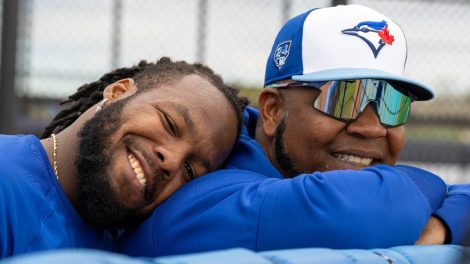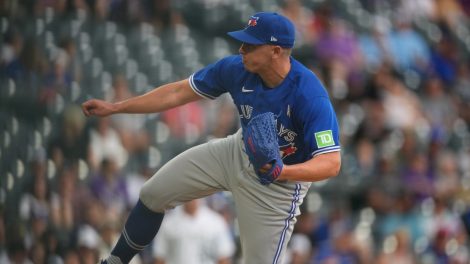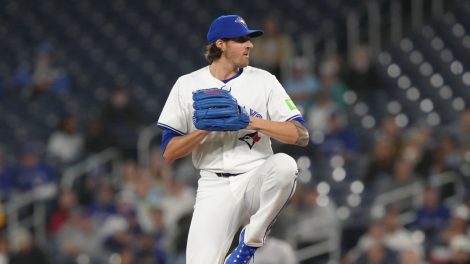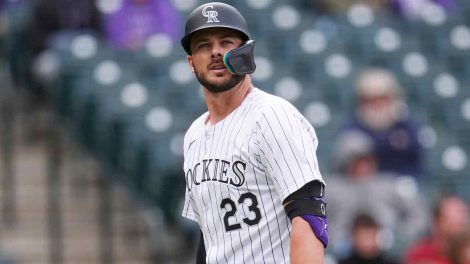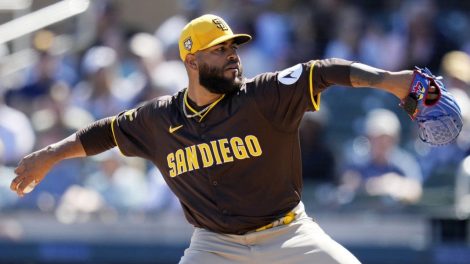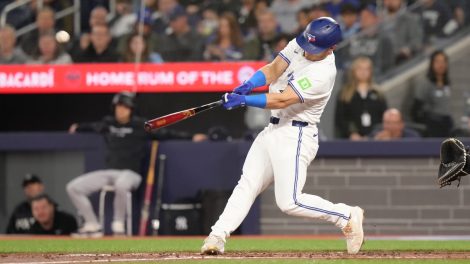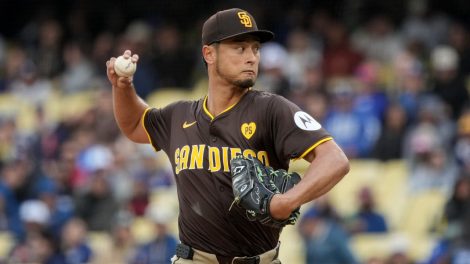On Wednesday, the Toronto Blue Jays will make their most important draft pick in more than 20 years.
The club’s fifth-overall selection is its top pick since 1997, it’s at a point in its competitive cycle where it still needs to add a piece or two to its core, and the heavily-truncated 2020 draft means it can’t compensate for early-draft blunders with late-round gems.
Suffice it to say, there’s a lot riding on this pick. In recent weeks, the Blue Jays have been linked to college pitchers like Max Meyer and Emerson Hancock, college second baseman Nick Gonzales and even the draft’s top prep bat, Zac Veen. It’s impossible to know with confidence who they’re going to go with — even the Blue Jays’ front office won’t know for sure until they see how the first four picks fall. Supposing we knew who the team was going to pick, projecting that player before they make a professional appearance would still be a fool’s errand.
So, what can we do to try and predict how much this pick will mean to the Blue Jays?
In order to get an idea of the kind of player they’re likely to come away with, we’ve got to look at a little bit of draft history. It’s easy to say the fifth-overall pick has yielded superstars like Buster Posey (2008) or Dwight Gooden (1982) as well as busts like Christopher Lubanski (2003) and Justin Wayne (2000). That gives us a sense of the possible outcomes, but not what’s fair to expect.
To do that, I looked at every draft since 2000 — a proxy for the start of the modern drafting era where statistical analysis was combined with traditional scouting, and a nice round number — to see how players drafted in the fourth-to-sixth-overall range panned out. I expanded the range to increase the overall sample size from 20 to 60, and because players drafted in that area of the draft tend to be similarly considered elite talents, but not generational ones.
To break it down a little further, I divided the players into the four major categories of draftees: college pitchers, high school pitchers, college hitters and high school hitters. What follows is an overview of what the Blue Jays can expect from their top pick on Wednesday, depending on what type of player they opt to select:
College Pitchers (2020 Example: Emerson Hancock, Max Meyer, or Reid Detmers)
Players: 21
Total MLB seasons: 100
MLB WAR: 77.1
Combined hardware: three All-Star appearances
Notable names: Andrew Miller, Brandon Morrow, Drew Pomeranz, Ricky Romero, Kevin Gausmann
Notable names for the future: A.J. Puk and Brendan McKay
Analysis: College pitchers are supposed to be “safe” picks, especially high in the draft, and that’s borne out here as only two of these 21 pitchers never reached the majors (Josh Carp and Barret Loux). That said, there is far more mediocrity than star power here. Based on their MLB careers, you’d never have guessed that guys such as Tim Stauffer, Ross Detweiler, or Brad Lincoln were top picks, even if they did carve out MLB careers. There are some elite relievers here, but no franchise building blocks — even if Romero looked like he might reach those heights with the Blue Jays.
Of the top-10 pitchers in MLB by WAR in 2019, three were drafted out of college at higher than fifth overall (Gerrit Cole, Steven Strasburg, Justin Verlander), three were later-round picks (Lance Lynn, Jacob deGrom, Shane Bieber) and three were drafted out of high school (Zack Greinke, Charlie Morton, Lucas Giolito). Only one, Max Scherzer, was a college pitcher taken at a similar spot (11th). That doesn’t prove anything definitive, but it does seem that it’s hard to find an elite ceiling with a college arm that is collectively well thought of, but not deemed worthy of a top-three pick.
The Blue Jays have been burned a couple times by taking the supposedly high-floor college arm and ending up with guys like Chad Jenkins (2008), Deck McGuire (2010) and Jon Harris (2015), but their most recent pick, Alek Manoah, shined in his pro cameo last season.
High School Pitchers (2020 Example: Mick Abel)
Players: 11
Total MLB seasons: 48
MLB WAR: 98.5
Combined hardware: one Cy Young, six All-Star appearances
Notable names: Zack Greinke, Zach Wheeler, Dylan Bundy, Gavin Floyd
Notable names for the future: N/A
Analysis: Greinke accounts for the majority of the value of these players, and all of the hardware. That’s fitting because the conventional wisdom is that investing high picks on high school pitchers is a bold move that could net you a star, but is fairly likely to result in a bust.
Of these 11 players, three of them (Mike Stodolka, Clint Everts, Matt Hobgood) never made the major leagues. Riley Pint, 22, could join them as he currently ranks 29th on MLB Pipeline’s list of Colorado Rockies prospects and hasn’t reached High-A yet.
It would be a shock to see the Blue Jays go in this direction as the top prep pitcher available (Abel) isn’t being ranked near the fifth pick. The last time the franchise used its top pick on a high school arm — that they actually signed — was Roy Halladay in 1995.
College Hitters (2020 Examples: Nick Gonzales or Heston Kjerstad)
Players: 14
Total MLB seasons: 89
MLB WAR: 240.1
Combined hardware: two MVPs, two Rookie of the Year Awards, 22 All-Star appearances, 14 Silver Sluggers, seven Gold Gloves
Notable names: Buster Posey, Mark Teixeira, Ryan Zimmermann, Ryan Braun, Matt Wieters, Anthony Rendon, Kyle Schwarber
Notable names for the future: Nick Madrigal, Jonathan India
Analysis: This is clearly the category where the best value has been found. College hitters are easier to assess than their high school counterparts and not as susceptible to injuries as pitchers. Although you might expect these guys to lack elite ceilings, we’ve got some true superstars here. Floor isn’t a problem either, as every single one of the 14 players here made the major leagues, or still could. The group contains some unimpressive players such as Tony Sanchez and Christian Colon, but if you take a college bat at this point in the draft, it’s fair to expect some kind of MLB contribution.
Recent history makes this look like more of a layup than it is, though. Teams know all about draft picks’ expected outcomes and yet no one took a college hitter in the four-to-six range in 2012, 2015 or 2017. Sometimes the right player just isn’t there.
That could be the case for the Blue Jays in 2020. Gonzales is the only college hitter who projects to go around the team’s pick. If he goes before their selection — as Jim Callis of MLB.com predicted in his mock draft — their next option would probably be outfielder Heston Kjerstad, who would be considered a reach.
High School Hitters (2020 Example: Zac Veen)
Players: 14
Total MLB seasons: 20
MLB WAR: 8.5
Combined hardware: N/A
Notable names: Rocco Baldelli, Alberto Almora
Notable names for the future: Clint Frazier, Kyle Tucker, Jarred Kelenic, Riley Greene
Analysis: To be fair to this category, there are quite a few players under this umbrella whose careers have yet to play out. Youngsters like Frazier and Tucker, or prospects like Kelenic and Greene, could bail this group out and make it look awfully different in the years to come. For now, though, it’s a wasteland.
Baldelli is the only guy who became an impact player, and his career was relatively brief. This is clearly dangerous territory and there’s no Greinke to change the shape of it yet. Perhaps there will be. Perhaps Veen could be that guy for the Blue Jays.
While it’s impossible to rule that out, it’s also impossible to deny the risk that comes with spending a pick as valuable as the one Toronto possesses on a high school bat — even if it’s the top-ranked prep hitter in the draft. The Blue Jays plucked Vernon Wells from this high-risk group in 1997, but the odds of doing that again would seem to be against them.
[relatedlinks]

